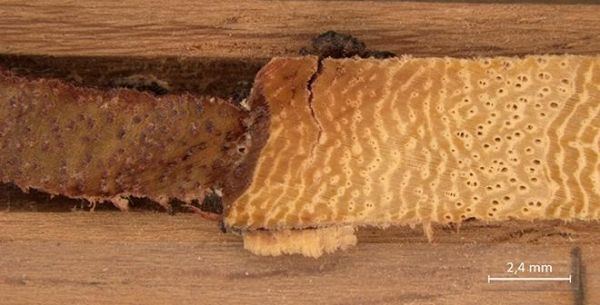While walking or driving along tree-lined streets in São Paulo, Brazil’s largest city, you will pass many a tipuana tree (Tipuana tipu). Also known as rosewood or tipu, it is a tall tree with a large spreading canopy and is ubiquitous in the city.
The tipuana, native to several South American countries, including Bolivia, was first planted in São Paulo in the 1950s. In addition to providing shade and other environmental benefits, it also bears witness to the evolution of pollution in the city.
Researchers at the University of São Paulo’s Bioscience Institute (IB-USP) and Medical School (FM-USP), in collaboration with colleagues at the University of Campinas (UNICAMP), used the tipuana as a marker of heavy metals and other pollutants in the air breathed by São Paulo’s inhabitants.
Their analysis of the chemical composition of annual growth rings – concentric circles visible in a cross-section of the trunk – and samples of bark from fallen tipuana trees in the west of the city showed a reduction in the levels of pollution by cadmium, copper, nickel and lead in the last 30 years.
Read more at Fundação de Ampara à Pesquisa do Estado de São Paulo
Image: The chemical composition of the tree's growth rings reflects the levels of heavy metals in the soil year by year. (Credit: Giuliano Maselli Locosselli)


